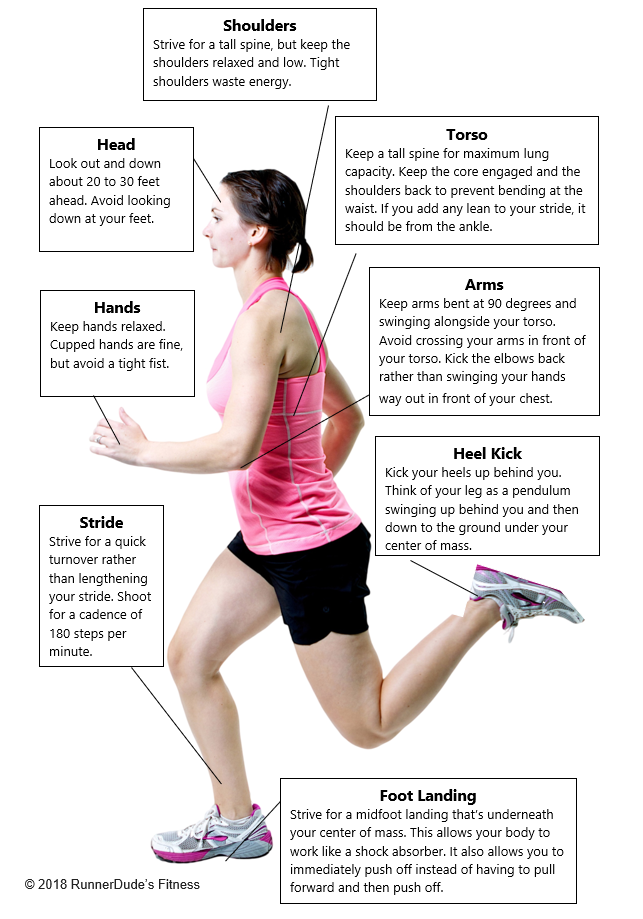Good Running Form
Proper running form is as important as full-body muscular endurance. They work together to help runners avoid impact-related injuries and to improve running efficiency.
When running, think of your torso or core as your center. The more you can keep your appendages (head, arms, legs, feet) near your core or center of mass, the less stress you’ll put on your body while running. Less stress means less caloric expenditure (wasted energy), which means more fuel for your running.
Poor running form creates a domino effect. If your upper body is weak and has little muscular endurance, your shoulders and upper back will fatigue not far into a long run, causing you to slouch and move your head forward away from the torso. Your head weighs about eight pounds—relative to a small bowling ball. Imagine running with a bowling ball out in front of you. A similar thing happens when you round the shoulders and drop your head forward: Your head’s weight pulls on your upper back, which in turn fatigues the muscles all down your back.
If your core isn’t strong, then it, too, will fatigue with the added stress created by your slumped upper body. Once your core fatigues, your legs are left to carry all that upper-body “dead weight” and will quickly fatigue.
Ever see a runner at the end of a marathon hunched over, looking down, zombie-faced? He’s probably a victim of the domino effect.
Building full-body muscular endurance, particularly in the core and upper body, and following these good running-form tips will help protect you from the domino effect.


